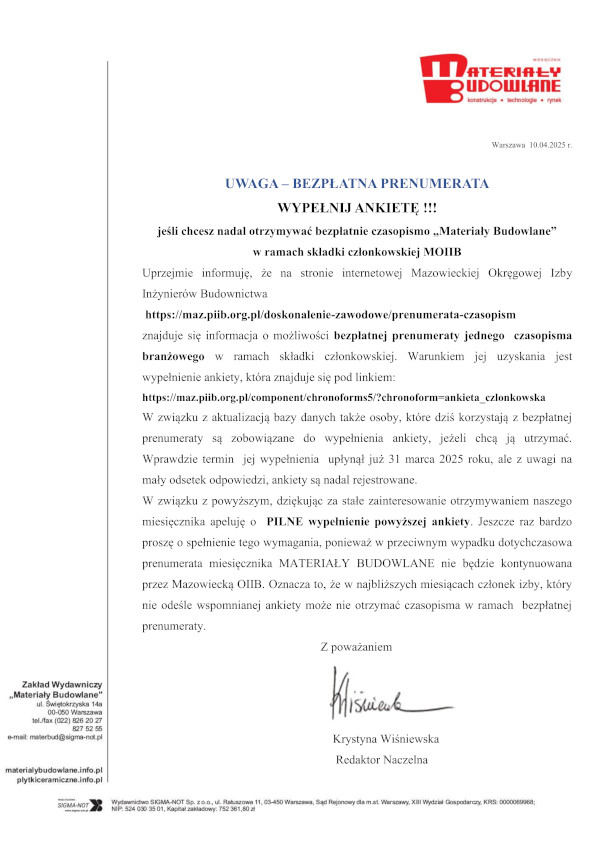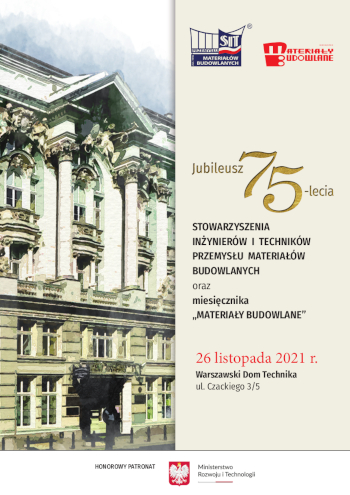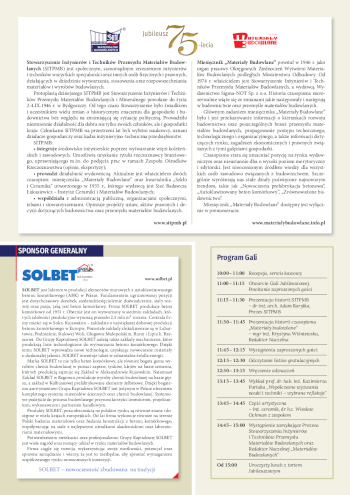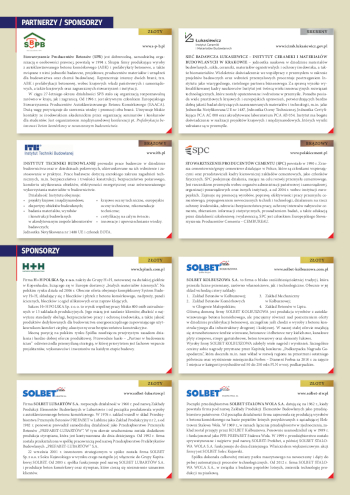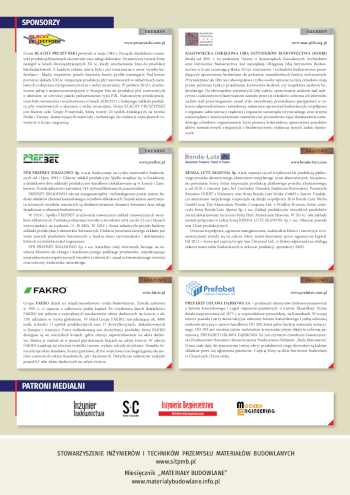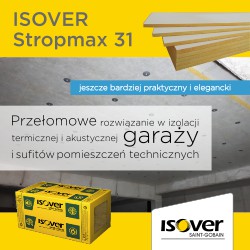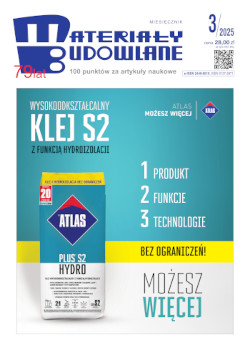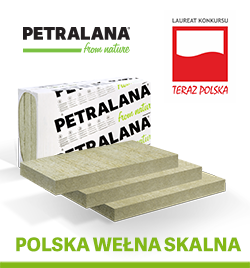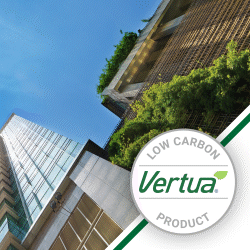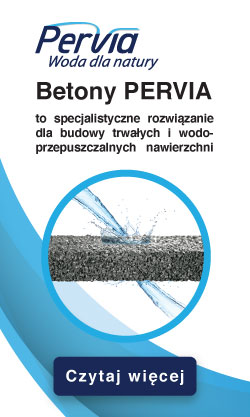mgr Wojciech Siemiński, Sempre Farby Sp. z o.o.
dr inż. Wacław Brachaczek, Akademia Techniczno-Humanistyczna, Bielsko-Biała
Często na opakowaniach czy w kartach technicznych tynków renowacyjnych pojawiają się informacje typu: tynk przeznaczony do osuszania i rekonstrukcji wilgotnych murów, co sugeruje, że wykonanie wyprawy tynkarskiej na zasolonym i zawilgoconym murze spowoduje jego osuszenie lub odsolenie. To nie do końca prawda. Skuteczność tych materiałów zaobserwowano wówczas, kiedy prace renowacyjne poprzedzone zostały szczegółową analizą stanu obiektów. Autorzy opisują funkcjonowanie tynków renowacyjnych oraz analizują efekty przeprowadzenia w 7 różnych obiektach pełnego systemu renowacyjnego oraz ograniczonych zabiegów renowacyjnych.
* * *
Refinishing plaster
The article concerns the subject of effectiveness of refinishing plaster. Complex damp-proofing in already existing buildings is one of the most difficult and expensive actions. Such works are connected with interference with the building substance, therefore they are accompanied by noise and dirt, which makes them bothersome, especially when they take place in inhabited buildings. There are situations, when complex damp-proofing is impossible due to technical or economical reasons. In such cases there is the need to partly renovate the building by using only refinishing plaster. The evaluation of effectiveness of efinishing plaster functioning in such situations is the subject of this paper. 7 buildings have been selected for analysis. 2 objects were fully renovated, 2 – partially, and in the case of the remaining ones only refinishing plaster was applied. The results showed that in the beginning the level of moisture content did not vary from the one set for the walls of buildings in which complex renovation took place. Functionality of refinishing plaster on the walls which were partially renovated will only be effective in the beginning. However, as soon as the pores of refinishing plaster are filled with crystallizing salts, the layer will lose its hydrophobic properties and it will no longer constitute an effective solution against aggressive action of salt.
Materiały Budowlane 6/2013, strona 52-56 (spis treści >>)


